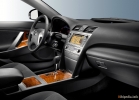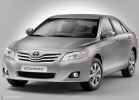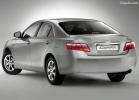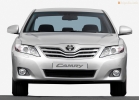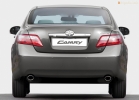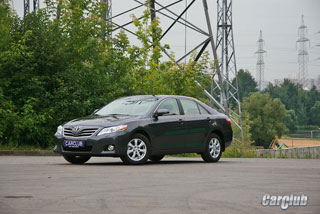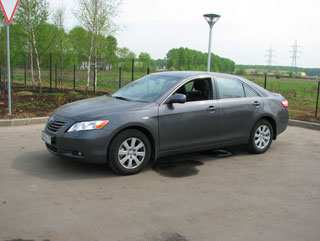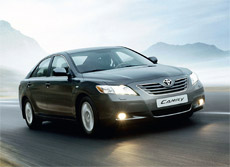Toyota Camry test drive since 2009 sedan
Royal army
 From Japanese Camry (Camry) translates like a small crown. The attribute of power for different parts of the world was studied by Pavel Leonov. Photo: Konstantin Yakubov.
From Japanese Camry (Camry) translates like a small crown. The attribute of power for different parts of the world was studied by Pavel Leonov. Photo: Konstantin Yakubov. The fifth-generation Toyota-Kamri (the ACV30 factory index) debuted in September 2001 at the Frankfurt Auto Show and was produced only with a sedan body at factories in Japan (and in the domestic market it was available since 2000), the USA, Canada and Australia (where production was made It began later than all in 2002) until the appearance of a successor in January 2006. Only Japanese assembly was officially supplied to Russia, the US and Canada plants saturated the western hemisphere of the planet, while the products of the Australian branch were intended for the local market and the countries of the Middle East.
The place of birth can be recognized by the first signs VIN: JT indicates Japanese origin (and if after the first two letters it costs 1 car was intended for the European market, if 2 then for the American one), 4T for American and 6T, respectively, to Australian.
The fifth generation Camry was designed in the United States, taking into account local characteristics, but for sales around the world. This explains the neutral design, a characteristic shape of the front panel, a handbrake in the form of a pedal, a button for disconnecting an overdrive on the box lever and other features.
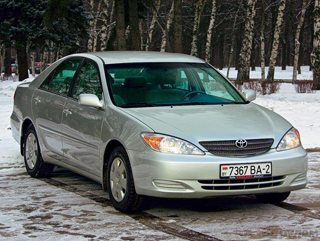 OFFICIAL VERSION
OFFICIAL VERSION If only she should follow, then in Russia they sold Camri with two types of engines in a row four with a volume of 2.4 liters (152 hp) and a V6 with a volume of 3.0 liters (186 hp). Moreover, the first was available both with a 5-speed mechanics and a 4-speed automatic, the latter only with an automatic machine, although in nature there is a rare version with a conventional box (in the markets of the Middle East and Australia).
After restyling in 2004, the machine gun received another, fifth step. Front and back lighting equipment, a radiator grille, front bumper, and a shape of the fogamins were also changed. The standard configuration appeared: front and rear parking sensors (disconnected), Audiosystem buttons on the steering wheel, the panel of the instrument and even more wood in the decoration of the salon.
Only two R1 and R2 were offered for the domestic market for the domestic market. The first included AVS with an electronic brake force distribution system (EBD) and an assistant emergency braking (Brake Assist), frontal and side pillows of non-passability, active headlights of front seats, seat belts with pretense and force limiters, climate control, electric windows, electric windows, electric windows Heating of the front seats and electric mirrors, an audio system with a CD player, rain sensor, light sensor and alloy wheels. For a fee, it was possible to purchase electric drives of the front seats, a leather salon and cruise control. To the R2 set to all of the transferred, the target stability systems (VSC) and anti -wings (TRC), as well as the rear safety curtains (to order) were added to the.
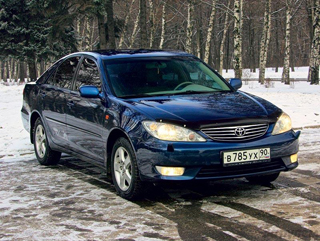 Machines intended for Russia and Europe have an enlarged clearance and a more rigid suspension. The stabilizers of the transverse stability of Americans and Europeans are different.
Machines intended for Russia and Europe have an enlarged clearance and a more rigid suspension. The stabilizers of the transverse stability of Americans and Europeans are different. It is curious that European versions were almost no different from Russian, not counting some nuances (the obligatory presence of pharmacists in some European countries, another designation of completion).
Overseas interpretation
Camrei sold in the American market differ from relatives from other regions by the presence of additional reflective elements in the anterior optics, the shape of a light beam, the absence of side signs of turns on wings that are non -combined mirrors, digitizing instruments (in miles and pharyngeites), and other quality of the components (most of them Machines are made at local factories from local nodes) and regional assemblies of Le, SE and XLE much poorer than those offered in the markets of other countries. Equipping the richest version of Xle corresponds to the basic level of configuration of European machines.
Catalogs are also found cars equipped with a V6 engine (3.3 liters, 225 hp), intended exclusively for North America.
The marking of the details of overseas machines differs from the designations of analogues of other markets, which leads to confusion when ordering spare parts.
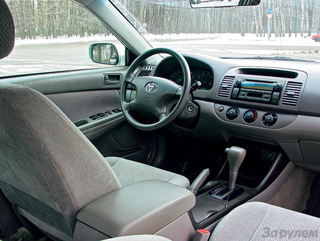 Eastern tales
Eastern tales In the Middle Eastern region, cars were sold in all conceivable and unthinkable modifications: with the right (Malaysia, Thailand, Indonesia) and Left (Philippines, Taiwan, Vietnam) the location of the steering wheel (in Australia, it was possible to purchase cars with both the right and left -handed steering wheel ), equipped with mechanical and automatic transmissions, in the poorest (mechanical windows, a minimum of electronic assistants, etc.) and the richest (navigation, memory of seats, xenon, etc.) trim levels.
In Singapore, Taiwan and Thailand, cars are found that differ from their analogues with body elements and optics (wider and tall front blocks, rear lights move from wings to the lid of the trunk, other wings, hood, etc.), and very rare copies in complete minced meat, but with a two-liter engine 1AZ-FE.
Fifth generation Camrie, prescribed in the hottest countries of the East (the UAE, Saudi Arabia, Kuwait, etc.), did not equip heated mirrors and seats, rain sensors. They got low-power stoves, air conditioning (instead of climate control), unimportant anti-corrosion treatment, battery of smaller capacity, etc. Black machines differ in a shade from similar Camry from other countries (paint code 209 instead of 202).
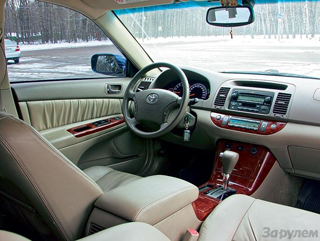 Native Penates
Native Penates In the domestic market, Japan was offered Kamri with the only engine in a row four with a volume of 2.4 liters (159 hp) and automatically. True, there were modifications that are not found in other countries: touring (Touring) with sports notes (spoiler, other radiator and optics grille), all-wheel drive cars (2.4G Limited Edition), as well as equipped with AVS electronically modulated suspension (TEMS ), which allows you to regulate the rigidity of shock absorbers. In addition in the Japanese market, there is an analogue of Toyota-Kamri Dahatsu-Altis. Outwardly, Altis is an exact copy of his parent (with the exception of the emblem), but unlike Toyota was equipped with two four: 2.4 l (159 hp) and 2.2 liters (140 hp).
GOLDEN MEAN
Since Kamri initially focused on the American market, which the statistics of sales are indicating eloquently (if in Europe there are thousands of cars sold, then in the United States hundreds of thousands), copies prevail from this region in the secondary market. However, it is better to look for European and Russian versions. They are more expensive, but they will provide the owner with much more comfort and security.
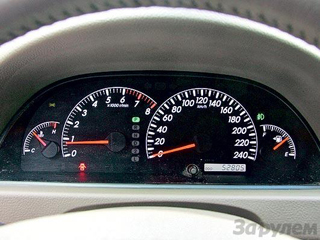
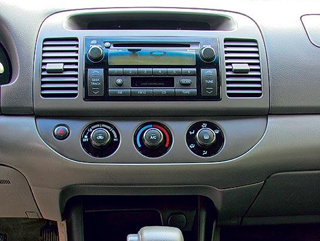
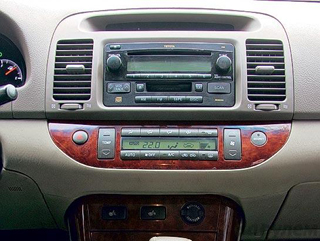
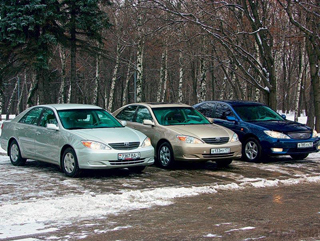
Source: The magazine "Driving"

